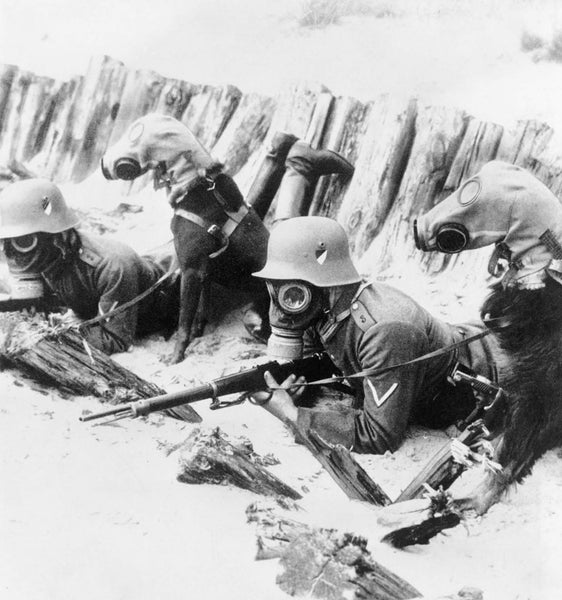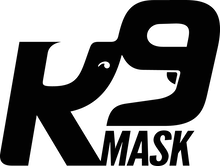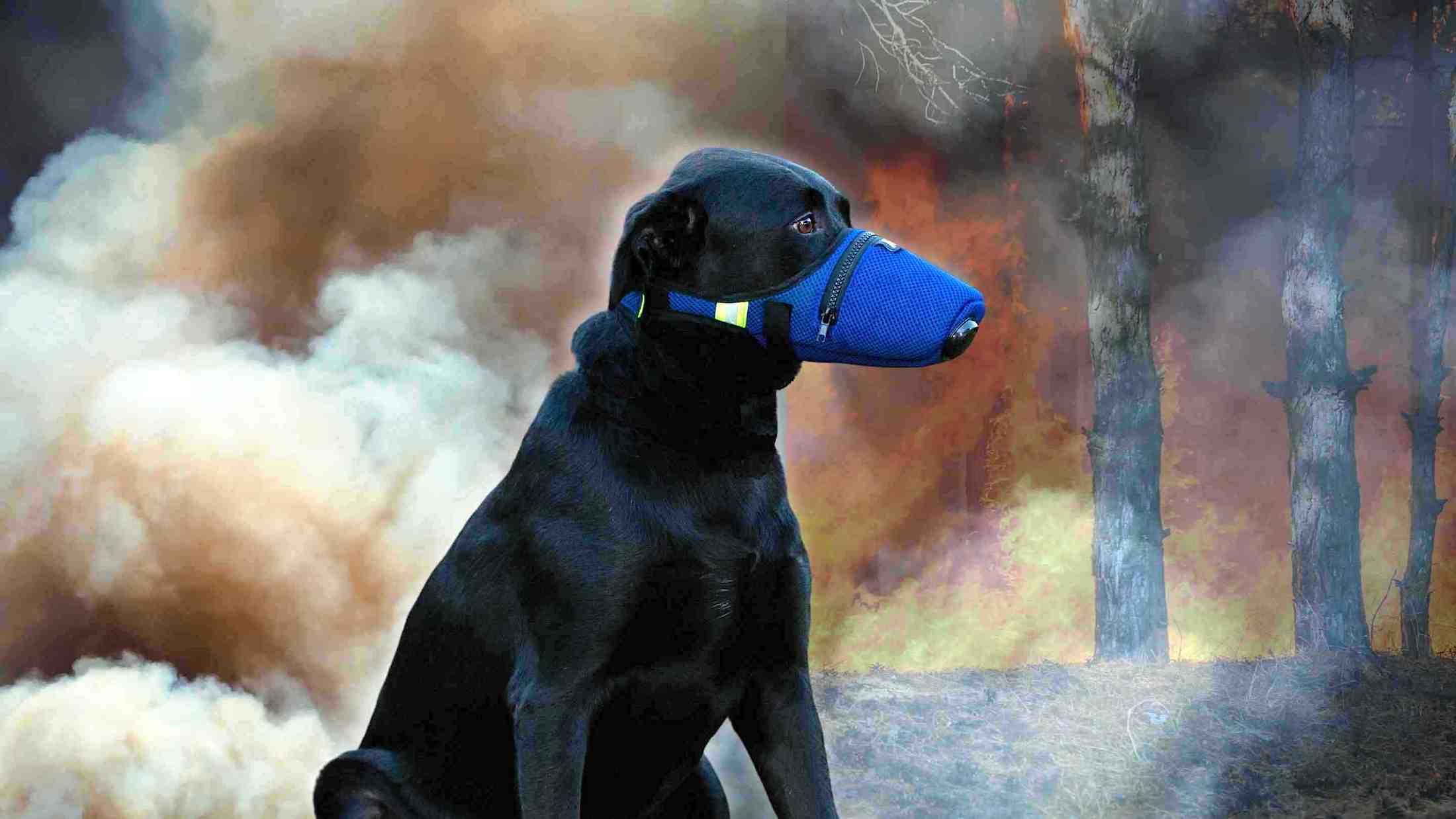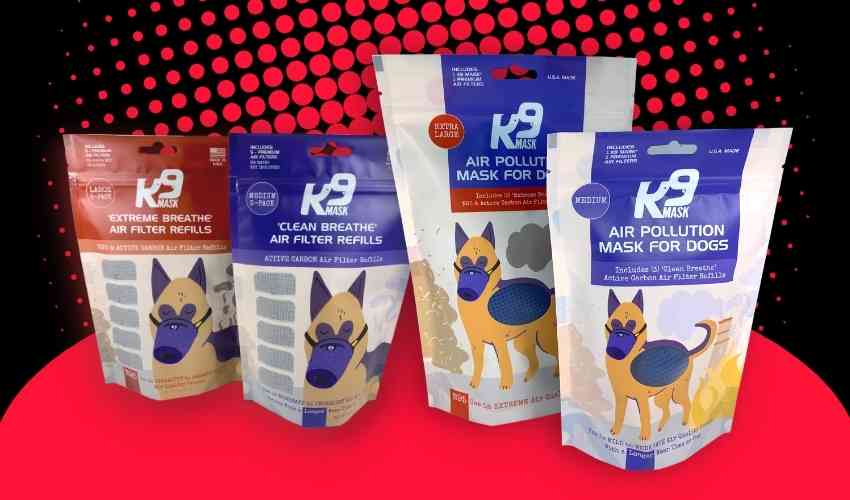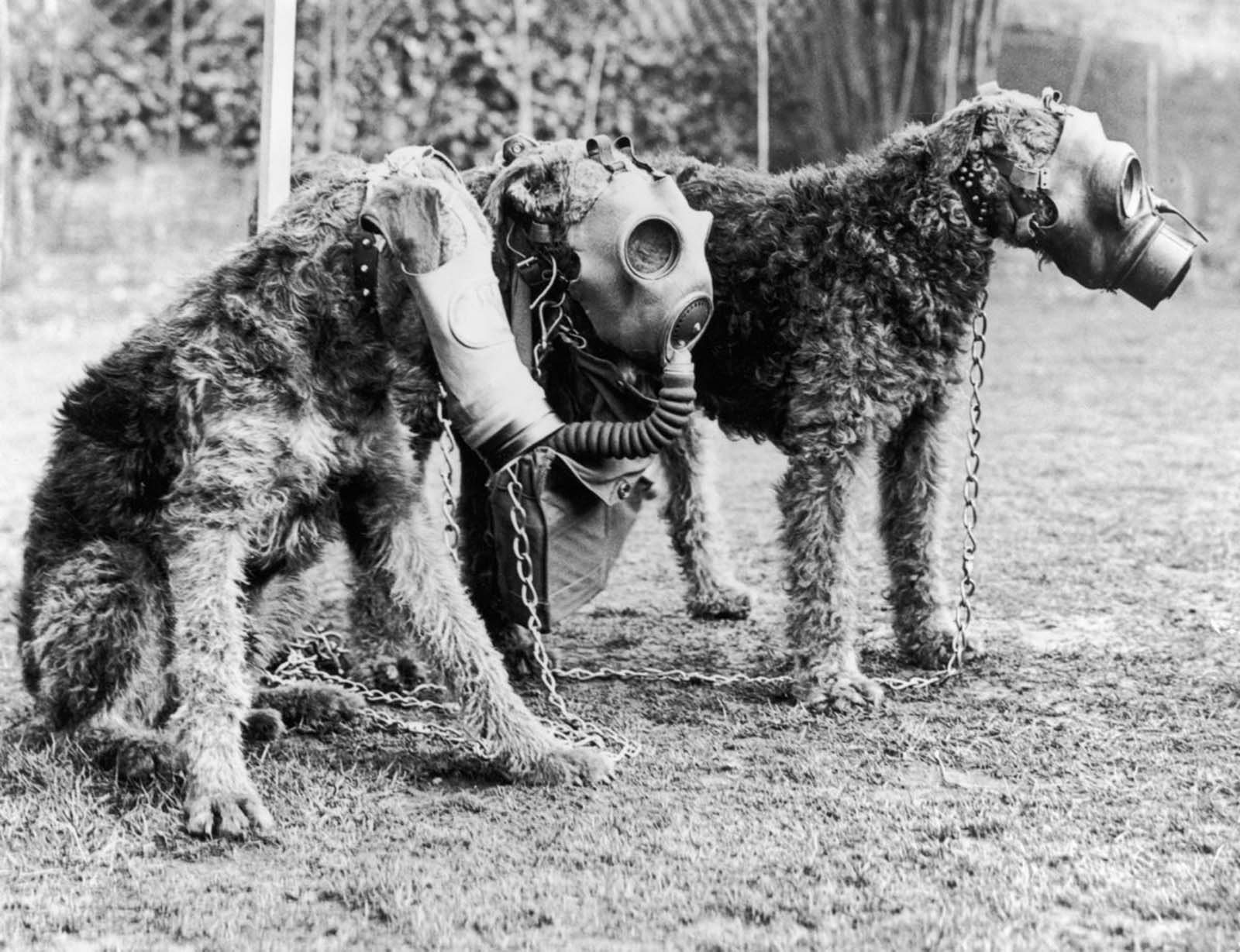Trying to solve the problem of dogs needing protection from air pollution threats has been an important topic for military leaders throughout the 20th century and into the current 21st century. The main concern for military leaders has been chemical toxins being used on the battle field which affect human soldiers and canine service animals.
The use of gas masks for military dogs dates back to World War I. The use of chemical warfare was prevalent in the trenches and soldiers were not the only ones affected. Military dogs were used for various purposes, including sentry duty, messenger service, and reconnaissance, and were vulnerable to the same chemical agents as their human handlers.
To protect them, gas masks were developed specifically for dogs, and were introduced in the war effort. These masks covered the dog's nose and mouth, providing them with protection against toxic gas. The use of gas masks for military dogs continues to this day, as they remain an important part of military operations in various conflicts around the world.
To solve the problem of chemical warfare on the battlefield for soldiers there have always been adaptive innovation for dogs serving in the military. How can we effectively care for the needs of these dogs in a toxic chemical warfare crisis?
Here is a collection of historical images of military service dogs wearing a variety of gas masks to protect them from these threats. Gas or chemical masks for dogs continues to be an area of innovation for military leaders around the world.


